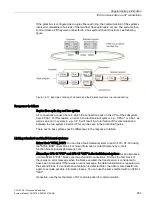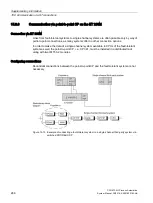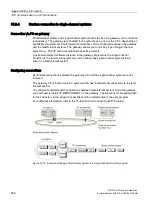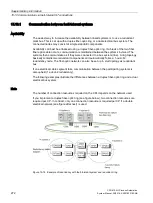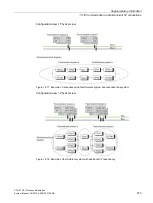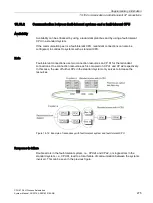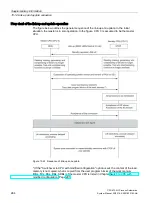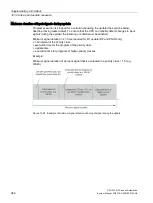
Supplementary information
15.10 Communication via fault-tolerant S7 connections
CPU 410-5H Process Automation
System Manual, 09/2014, A5E31622160-AB
271
Example: If you are operating 5 fault-tolerant S7 connections with a monitoring time of
500 ms and short synchronization cables up to 10 m and you want to change these to long
synchronization cables with a length of 10 km, you must increase the monitoring time to
1000 ms.
To ensure CIR capability of the fault tolerant system, you must activate the "Save
connections prior to loading" option in Step 7 NetPro.
Programming
Fault-tolerant communication is supported on the fault-tolerant CPU and is implemented
using S7 communication.
This is possible only within an S7 project/multiproject.
You program the fault-tolerant communication with STEP 7 using communication SFBs.
These communication blocks can be used to transmit data over subnets (Industrial Ethernet,
PROFIBUS). The communication SFBs integrated in the operating system enable an
acknowledged data transmission. In addition to data transfer, you can also use other
communication functions for controlling and monitoring the communication peer.
User programs written for S7 connections can also be used for fault-tolerant S7 connections
without program modification. Cable and connection redundancy has no effect on the user
program.
Note
For information on programming the communication, refer to the STEP 7 documentation
(e.g.,
Programming with STEP 7).
The START and STOP communication functions act on exactly one CPU or on all CPUs of
the fault-tolerant system (for more details refer to Reference Manual
System Software for
S7-300/400, System and Standard Functions).
Disruptions of a subconnection while communication jobs are active over fault-tolerant S7
connections can extend the runtime of these jobs.
Note
Downloading the connection configuration during operation
If you download a connection configuration during operation, established connections may
be terminated.







